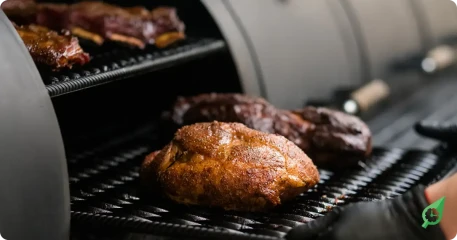Managing labour costs is a crucial factor in the restaurant industry, where finding the right balance between top-notch service and smooth operations is essential for making a profit. Controlling labour costs cannot be emphasised enough, as it directly determines a restaurant's financial success. In an industry known for its narrow profit margins, effective management of labour costs is vital for ensuring that a business can grow and remain financially secure. This includes keeping track of wages and salaries and ensuring that employees are working efficiently and that there are enough staff on hand to meet customer demand.
Labour Costs in the Restaurant Industry
Labour costs in the restaurant industry cover more than just employee salaries. They also include expenses like overtime, bonuses, insurance, and benefits. Any cost related to hiring and keeping staff is considered a labour cost.
The Significance of Labour Cost Percentage
The labour cost percentage is a significant measure for restaurant owners and managers. It shows the relationship between labour expenses and total sales, which helps determine how efficiently the restaurant runs. This percentage directly impacts the restaurant's profitability. If the labour cost percentage is lower, there is a higher profit potential. Finding the right balance is vital because having too few staff members can negatively affect customer service while having too many can reduce profits. According to industry standards, it is recommended that a restaurant's labour cost should be around 30% of its total sales. This target can differ based on the type of restaurant and how it runs.

The Ideal Labour Percentage: What the Experts Say
Knowing the perfect labour cost percentage is crucial for a restaurant to stay successful and make money. Let's look at the standards set by professionals in the field and see how these percentages change depending on the type of restaurant and its location.
Industry Benchmarks for Labour Cost Percentages:
- Most experts believe the ideal range for restaurant labour costs is between 25% and 35% of total revenue. This balance allows for quality products or services and profitability. According to the Australian Bureau of Statistics, labour costs can vary significantly across different sectors within the hospitality industry, underscoring the importance of tailoring cost management strategies to specific business models.
Impact of Location:
- The location of a restaurant determines how much they have to spend on their employees. A restaurant in a busy city with high living expenses usually has to allocate more money for labour costs. For example, a restaurant in the central business district of Sydney might face higher labour expenses than a similar restaurant in a smaller town due to the difference in wage rates and living costs.
Expert Opinions on Healthy Labour Cost Percentage:
- Professionals in the hospitality industry suggest that maintaining labour expenses within the mentioned ranges can significantly impact a restaurant's financial success. It is advised to regularly review these percentages, considering factors such as seasonal fluctuations and changes in minimum wage laws.

What Are the Factors Influencing Your Restaurant's Labour Costs
Understanding the factors that affect your total labour costs is crucial for effectively managing your restaurant's finances. Let's examine how different elements can impact these expenses.
- Location: Your restaurant location significantly determines the wages you need to pay your employees. The presence of skilled labour in your area can influence how much you pay to attract qualified staff.
- Restaurant Size: The size of your business is a crucial factor in how much you pay for labour. Larger businesses need more employees to keep things running smoothly, increasing labour costs. Smaller restaurants may have a smaller team but still need to find the right balance to provide quality service without overspending.
- Service Style: Upscale dining establishments, known for their exceptional customer service, require skilled and experienced staff, resulting in higher wages. Conversely, fast-casual or quick-service restaurants operate with a smaller team, prioritising efficiency and potentially reducing labour costs.
- Menu Complexity: A sophisticated menu requires chefs and kitchen staff with advanced skills, leading to higher labour costs. To control expenses, consider simplifying your menu or implementing a more efficient method of food preparation.
- Local Labour Laws and Regulations: Adhering to the local labour laws is paramount for businesses. By staying informed and following these regulations, businesses can avoid penalties and effectively manage costs.
- Technology and Automation: Investing in technology may seem expensive initially, but it can save much money on labour costs in the long run. Management software can help optimise schedules and minimise overtime expenses, which helps control labour costs.

Strategies for Optimising Your Restaurant's Labour Costs
Keeping your restaurant's labour costs low is vital to staying profitable and providing top-notch service. Check out these tips for effectively managing and cutting labour costs without skimping service quality.

- Implement Efficient Scheduling: Use scheduling software to predict how busy your restaurant will be and make schedules that match the times when it's busy or quiet. This helps you avoid having too many staff members when it's slow and not enough when it's hectic. By doing this, you can make sure your restaurant runs smoothly and efficiently. It also makes your staff happy because they know when they'll be working and have enough time to rest between shifts.
- Cross-Training Staff: Boost your team's skills by training them to do different tasks. This will make your team more adaptable and ensure you can provide excellent service with fewer employees. For example, if you teach your servers how to make coffee during slow times, you won't have to hire a full-time barista, saving you money on labour costs in the long term.
- Invest in Employee Training: Investing in thorough employee training from the beginning may seem strange, but it can save a lot of money on labour in the future. When employees are well-trained, they work more efficiently and make fewer mistakes, which guarantees customer satisfaction and customer loyalty. By investing in the growth of your staff, you can also decrease the number of employees leaving, a cost often overlooked in the restaurant business.
- Leverage Technology for Labour Management: Workforce management software can revolutionise how labour costs are managed. These incredible systems can automate schedules, monitor employee hours, manage leave, and predict staffing needs based on historical data and future reservations. By harnessing the power of technology, you can minimise labour costs and ensure compliance with labour laws and regulations.
- Regularly Review Labor Costs: Remember to periodically review and analyse the amount of money you spend on your employees in real-time compared to how much your restaurant earns. This can help you spot patterns, find areas to improve, and discover opportunities to improve things. For example, if you notice that you consistently spend a lot on employees during specific times of the day or year, you can change your staffing levels or how you run your restaurant to address it.

Maintaining the correct labour cost percentage is essential for your restaurant to profit and stay in business. This critical measure helps restaurant owners navigate the complex world of the hospitality industry. It's like a compass that guides them in finding the right balance, which requires constant monitoring and adjustments to ensure the success and growth of their establishment.
The restaurant industry constantly evolves due to market trends, consumer preferences, and economic factors. To stay ahead, calculating your labour cost strategies regularly is crucial. By taking a proactive approach and utilising technology and innovative management practices, you can boost efficiency and productivity while maintaining the high-quality service that distinguishes your restaurant. Remembering that a sustainable labour cost percentage is critical to running a successful restaurant that will thrive in the long run is essential. Keep refining your strategies, stay informed, and let your passion for food and top-notch service guide you towards a successful future.



